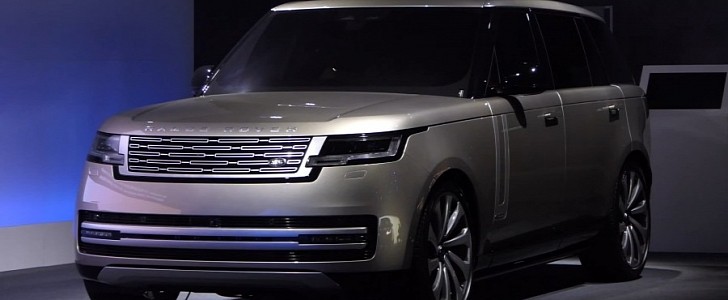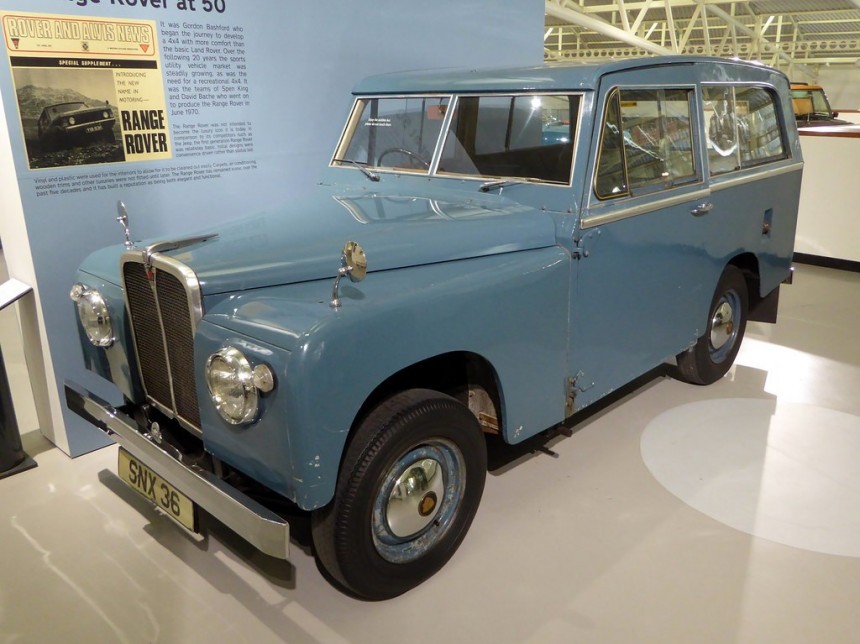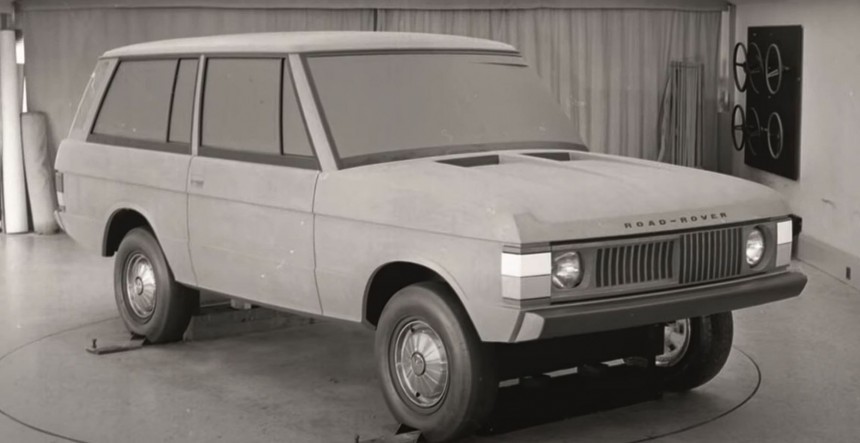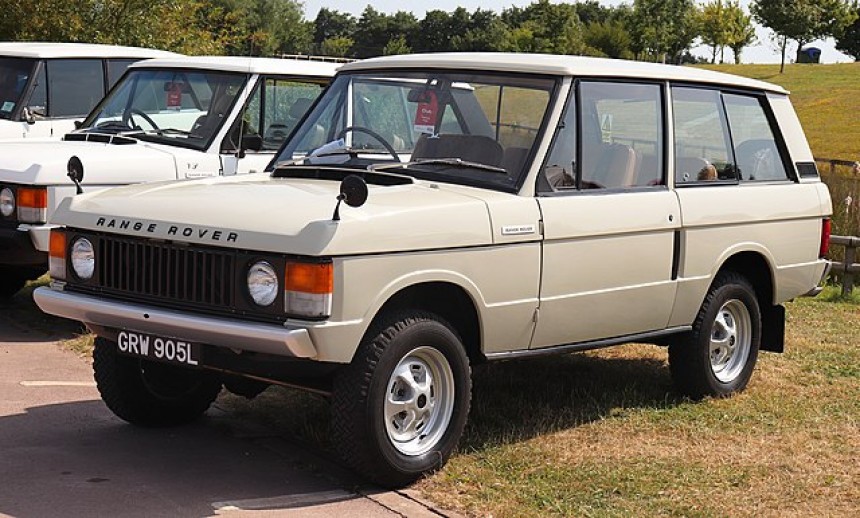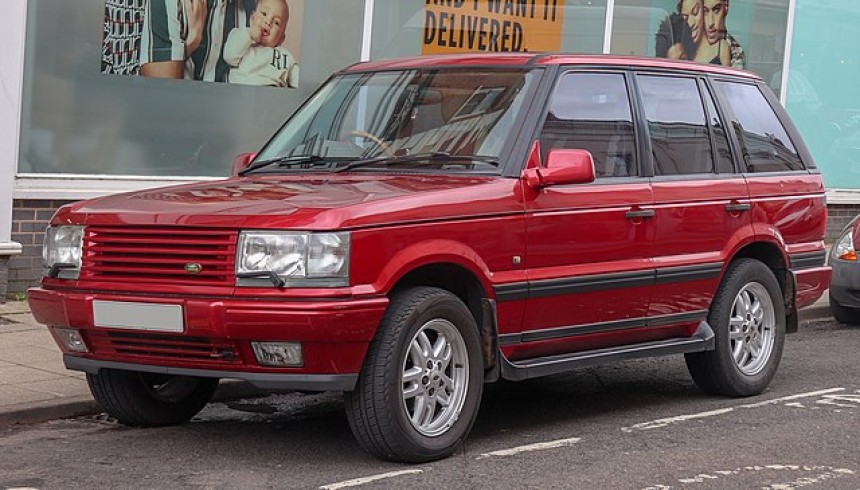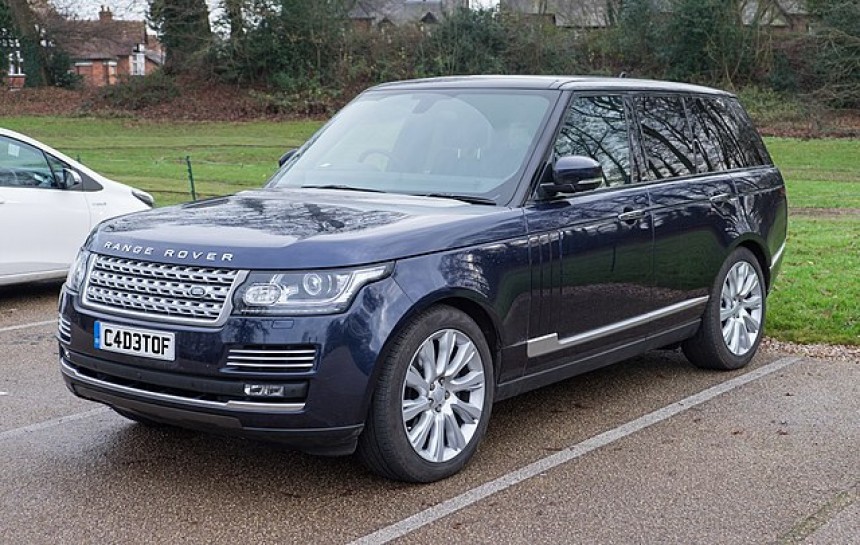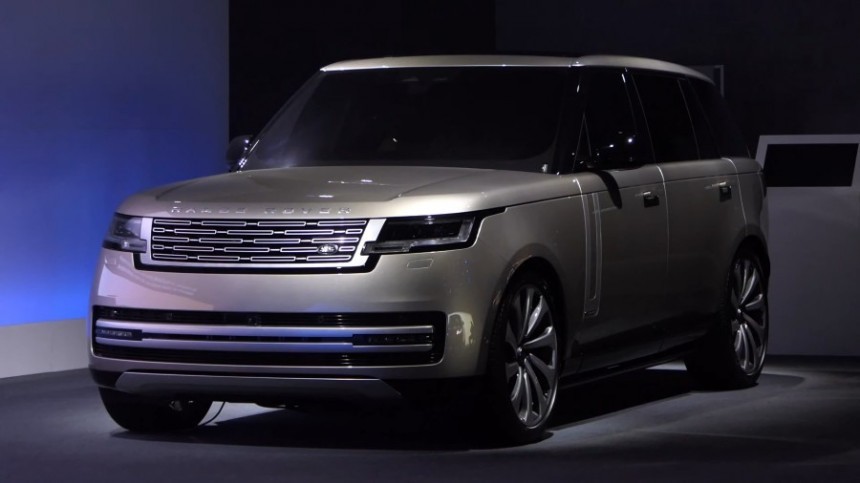Let's be real. Buying a Range Rover of any generation when a grassy field is the most treacherous terrain you're likely to find is a really bad idea.
But if you're the man who invented the world's most famous 4x4, the Classic Range Rover meant a lot more than that. In this case, modern Range Rovers are an affront to everything their vision stood for. Why? Because this man created the Range Rover to be the ultimate utilitarian 4x4, not to be a status symbol
Say hello to Charles Spencer King. Maybe not a household name like Carrol Shelby or Enzo Ferrari, granted. But his contributions to off-roading easily match more familiar faces from history.
Today, let's take a deep dive into the history and the musings of the man who gave us the Range Rover. Hopefully, by the end, it will be clear why he grew to loath what it would eventually become.
In truth, the history of the Range Rover predates its release in 1970, far earlier than some may be aware. Its development actually began back in the late 1950s. In those days, Land Rover was far from the 4x4 juggernaut it is today.
The Series I, II, and III edition Land Rovers were more than capable and did indeed save Rover from going bust. But it lacked something important, refinement. In short, it needed to be suited for more than just hearty rural folks. It needed to cater to the cosmopolitan, at least to a certain degree.
The result of trying to solve this problem became a concept vehicle called the Road Rover. A vehicle that may not look much like the Range Rover we know and love. More like a bloated Rover P5 or something. But rest assured, one would not exist without the other.
Rover Group engineer David Bates was brought on to help design the body of the Range Rover around the time Rover was getting serious about making a Bronco and K5 Blazer competitor. His design was smoother and more car-adjacent than what we know and love today.
What often gets lost in the details of the Range Rovers history is that the dynamic duo of Charles Spencer King and his life-long friend and colleague Gordon Bashford devised their own basic body panels and up-staged Bates by showing it off before he'd even had more than just a few drawings.
Rover was so impressed with King and Bashford's results that they promptly threw Bate's design in the trash. The rest is pretty much history. One can only think to assume David Bate's seething face sustained the dynamic duo of King and Bashford for many days.
The concept had the underpinnings of the Rover P4 Sedan. Subsequent editions had a series of unique bodywork designs to try and see if anyone combination had the total package the Rover Group thought could sell. Let's just be thankful the Range Rover didn't sport a Roll-Royce-esque front grille like the Mark I Road Rover did.
These original Road Rovers were designed primarily by one of Spencer King's colleagues, a man by the name of Gordon Bashford. But development on the project soon became bogged down. Very little development occurred from 1958 until 1966. At which point, Rover's attention was drawn to a phenomenon occurring across the globe.
On the other side of the Atlantic, the Americans were undergoing a 4x4 revolution of their own. Icons like the original Ford Bronco, Jeep Wagoneer, and the Chevrolet K5 Blazer were entering their full swing back in the mid to late 1960s. These off-roaders sported long wheelbase for the period, big V8 engines, and more refinements than one would expect from a 60s American vehicle.
This challenge from across the pond lit a fire underneath the Rover Company. As they too wanted to compete in the American market. Suddenly, Road Rover development was back on, and in a big way. The first order of business was to find a suitable engine. Because the iron-block four-cylinder under the hood during the early stages of development simply wasn't going to cut it.
Thankfully, Rover Group acquired the rights from General Motors to manufacture a new V8. A 215 cubic inch (3.5-liter) unit with an aluminum block, aluminum heads, and even the potential to mount turbochargers. As was the case with the Oldsmobile Jetfire derivative, a handful of Pontiac's were built with the engine as well.
With the rights to this engine now firmly in Rover Group's hands, it was time for Charles Spenser King and his team to bring all the pieces together. With the help of his colleague Gordon Bashford, the first pre-production Range Rovers were created in 1967, dubbed "Velar," during development. The Range Rover made its official debut in 1970. The rest, as they say, was history.
Sounds like a happy ending for Mr. King and his team. But it's a bit more complicated than that. You see, the Range Rover began a metamorphosis when Land Rover decided to compete for head to head with the Bronco and the Blazer in the States.
It's here when Charles Spencer King began to detest what he himself had created, or at least what it was turning into. Gone was the focus on dependability and off-road capability. Replaced with leather seats, wood trim pieces, and all the luxury SUV nonsense that spoils off-road ability.
Fast-forward to Land Rover's acquisition by BMW in the 1990s, and management had realized most new Range Rover owners never even crossed a muddy field. Let alone take one on the trail. Depending on who you talk to, this was even true well before BMW came knocking.
This is reflected in the makeup of subsequent Range Rover models, the P38A from 1994 to 2002 and the L322 from 2001 to 2012. Both of which King himself critically panned. As for the Range Rover Evoque, Velar, or even current iteration of the Range Rover due to be replaced this year, don't even get us started. He must have spun in his grave at the very sight of them.
"The 4x4 was never intended as a status symbol, but later incarnations of my design seem to be intended for that purpose," the British inventor told Glasgow's Daily Record in 2004. "To use the 4x4 for the school run, or even in cities or towns at all, is completely stupid."
As biased as he might have been, we have to give it to Mr. King. From an entirely logical perspective, the expensive, bougie, wasteful family hauler the Range Rover became makes next to no sense whatsoever.
Even its modern status as the ultimate luxury 4x4 can't save it from the distinction. King died on June 28th, 2010. Sparring him the sight of seeing what the Range Rover would evolve into ten years down the line.
With that very Range Rover set to debut this year, it appears the wishes of its creator will continue to be ignored. Much to the chagrin of everyone still around who remembers what Land Rovers used to be like long ago.
All favor of catering to suburban wine moms and absentee businessman dads who will never, and we mean, ever, take it off-road. It's a grudge that Charles Spenser King went to his grave carrying.
Rest in peace, Mr. King. Your contributions to the industry will outlive us all. Check back for more from Land Rover Month right here on autoevolution.
Say hello to Charles Spencer King. Maybe not a household name like Carrol Shelby or Enzo Ferrari, granted. But his contributions to off-roading easily match more familiar faces from history.
Today, let's take a deep dive into the history and the musings of the man who gave us the Range Rover. Hopefully, by the end, it will be clear why he grew to loath what it would eventually become.
In truth, the history of the Range Rover predates its release in 1970, far earlier than some may be aware. Its development actually began back in the late 1950s. In those days, Land Rover was far from the 4x4 juggernaut it is today.
The result of trying to solve this problem became a concept vehicle called the Road Rover. A vehicle that may not look much like the Range Rover we know and love. More like a bloated Rover P5 or something. But rest assured, one would not exist without the other.
Rover Group engineer David Bates was brought on to help design the body of the Range Rover around the time Rover was getting serious about making a Bronco and K5 Blazer competitor. His design was smoother and more car-adjacent than what we know and love today.
What often gets lost in the details of the Range Rovers history is that the dynamic duo of Charles Spencer King and his life-long friend and colleague Gordon Bashford devised their own basic body panels and up-staged Bates by showing it off before he'd even had more than just a few drawings.
The concept had the underpinnings of the Rover P4 Sedan. Subsequent editions had a series of unique bodywork designs to try and see if anyone combination had the total package the Rover Group thought could sell. Let's just be thankful the Range Rover didn't sport a Roll-Royce-esque front grille like the Mark I Road Rover did.
These original Road Rovers were designed primarily by one of Spencer King's colleagues, a man by the name of Gordon Bashford. But development on the project soon became bogged down. Very little development occurred from 1958 until 1966. At which point, Rover's attention was drawn to a phenomenon occurring across the globe.
On the other side of the Atlantic, the Americans were undergoing a 4x4 revolution of their own. Icons like the original Ford Bronco, Jeep Wagoneer, and the Chevrolet K5 Blazer were entering their full swing back in the mid to late 1960s. These off-roaders sported long wheelbase for the period, big V8 engines, and more refinements than one would expect from a 60s American vehicle.
Thankfully, Rover Group acquired the rights from General Motors to manufacture a new V8. A 215 cubic inch (3.5-liter) unit with an aluminum block, aluminum heads, and even the potential to mount turbochargers. As was the case with the Oldsmobile Jetfire derivative, a handful of Pontiac's were built with the engine as well.
With the rights to this engine now firmly in Rover Group's hands, it was time for Charles Spenser King and his team to bring all the pieces together. With the help of his colleague Gordon Bashford, the first pre-production Range Rovers were created in 1967, dubbed "Velar," during development. The Range Rover made its official debut in 1970. The rest, as they say, was history.
Sounds like a happy ending for Mr. King and his team. But it's a bit more complicated than that. You see, the Range Rover began a metamorphosis when Land Rover decided to compete for head to head with the Bronco and the Blazer in the States.
Fast-forward to Land Rover's acquisition by BMW in the 1990s, and management had realized most new Range Rover owners never even crossed a muddy field. Let alone take one on the trail. Depending on who you talk to, this was even true well before BMW came knocking.
This is reflected in the makeup of subsequent Range Rover models, the P38A from 1994 to 2002 and the L322 from 2001 to 2012. Both of which King himself critically panned. As for the Range Rover Evoque, Velar, or even current iteration of the Range Rover due to be replaced this year, don't even get us started. He must have spun in his grave at the very sight of them.
"The 4x4 was never intended as a status symbol, but later incarnations of my design seem to be intended for that purpose," the British inventor told Glasgow's Daily Record in 2004. "To use the 4x4 for the school run, or even in cities or towns at all, is completely stupid."
Even its modern status as the ultimate luxury 4x4 can't save it from the distinction. King died on June 28th, 2010. Sparring him the sight of seeing what the Range Rover would evolve into ten years down the line.
With that very Range Rover set to debut this year, it appears the wishes of its creator will continue to be ignored. Much to the chagrin of everyone still around who remembers what Land Rovers used to be like long ago.
All favor of catering to suburban wine moms and absentee businessman dads who will never, and we mean, ever, take it off-road. It's a grudge that Charles Spenser King went to his grave carrying.
